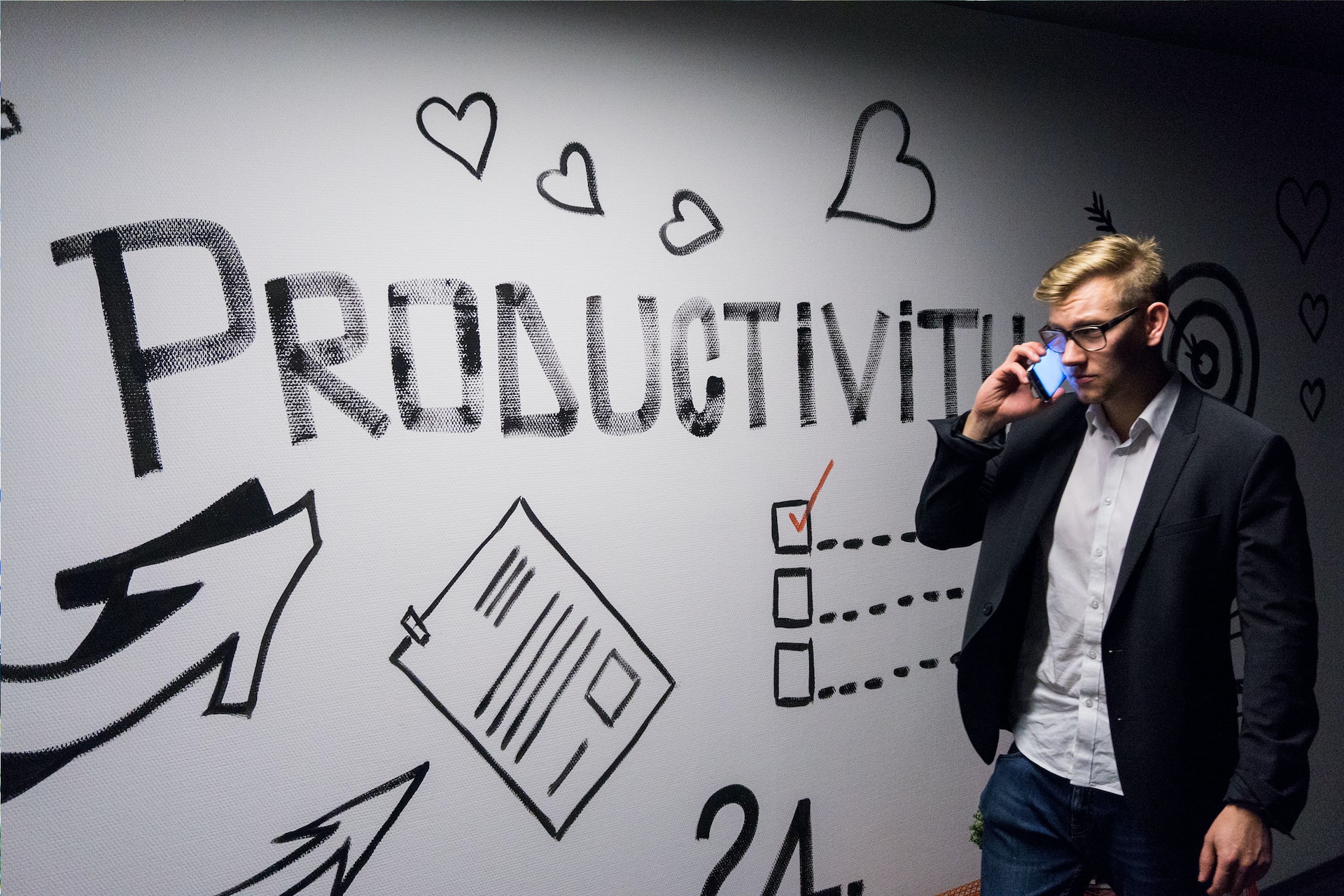Introduction
We’ve all been there — staring at the clock, waiting for it to hit that magical hour when you can finally call it a day. Time feels like it’s dragging, yet at the end of the day, the list of unaccomplished tasks haunts you. So what gives? This is a telltale sign that your understanding of productivity is skewed. And you’re not alone. So let’s dig into the real essence of productivity, peel away the myths, and lay out actionable steps to improve it.
Why Productivity Matters
Imagine being in the ‘zone’, where time bends to your will, tasks get ticked off like clockwork, and a sense of achievement fills you. Sounds like a pipe dream? It’s not. This is what mastering productivity can offer you — a life less burdened by stress, more time for pursuits that actually mean something to you. In this world where “busy” is a badge of honor, true productivity gives you the luxury of time, and let’s be honest, who wouldn’t want more of that?
What This Article Covers
But wait, there’s more! By the end of this read, you’ll not only know what productivity truly means but also how to measure it using metrics and KPIs. You’ll debunk productivity myths and learn hacks that can fit right into your daily routine. We’ll also tackle the science behind productivity and the best ways to optimize it. So buckle up, because we’re about to rewire how you view productivity.
Defining Productivity In-Depth
The Conventional View
The conventional wisdom has us believe that productivity is all about getting more done in less time. That’s why we have apps that promise to shave off seconds from our work or techniques that champion the idea of cramming more tasks into our already bursting schedules. According to a study from Harvard Business Review, this understanding of productivity is a trap. It leads to burnout and lower quality work. So, if you think downing an espresso shot and crunching numbers at a superhero speed makes you productive, think again!
The Multifaceted Nature of Productivity
Let’s get real. Productivity is not a one-size-fits-all concept; it’s more like a bespoke suit tailored to individual needs. Here are some dimensions to consider:
Time Management: It’s not just about doing things faster but doing the right things at the right time. A recent study reveals that effective time management can lead to a better work-life balance.
Employee Productivity: Beyond the spreadsheets, there’s emotional and mental well-being. Engaged employees show a 21% increase in productivity according to Gallup.
Skill Utilization: Are you using your core competencies to achieve goals or are you stuck in a rut doing mundane tasks?
Quality Over Quantity: Sometimes less is more. Producing top-notch work sometimes means creating less but of higher quality.
Mindfulness: Being fully present in what you’re doing has shown to significantly increase productivity, says mindfulness research.
Ready to redefine your productivity metrics yet? Remember, it’s a complex amalgamation of various factors that goes well beyond mere numbers. So, are you productive or just busy?
Common Myths About Productivity
Hold up, productivity zealots! Before you dive into your next deep work session or try out another ‘life-altering’ productivity hack, let’s debunk some commonly held myths that might be holding you back.
Being Busy is Being Productive
Spoiler alert: Being busy doesn’t mean you’re productive. If you’re caught up in the hamster wheel of back-to-back meetings and endless to-do lists, you might want to pump the brakes. Some might argue that a jam-packed calendar equals productivity, but let’s not confuse motion with progress.
Recent research from the Journal of Applied Psychology shows that high activity levels don’t necessarily correlate with impactful results. Instead of sporting ‘busyness’ as a badge of honor, consider auditing your tasks to see which ones align with your long-term goals.
Multitasking: A Friend or Foe?
Ah, multitasking — the productivity world’s forbidden fruit. While it might seem like juggling multiple tasks at once would make you more productive, science says otherwise. According to Stanford research, multitasking can reduce your cognitive ability and lead to mistakes.
Instead of attempting to be a jack-of-all-trades, focus on mastering one task at a time. Quality always trumps quantity, and a focused mind yields far better results.
How to Measure Productivity: Metrics and KPIs
Let’s switch gears and talk about how to really measure what you’ve got to show for all that hustle. We’re breaking it down into bite-sized chunks so you can actually understand what productivity means for you. Ready? Let’s dive in.
Quantitative vs Qualitative Measures
Ever heard the saying, “What gets measured gets managed”? While the sentiment is golden, the implementation is often murky. Most people default to quantitative measures—those neat numbers and percentages that look great in reports.
A 2019 Forbes article challenges this narrow focus, suggesting that qualitative metrics, such as employee satisfaction and creativity, are equally vital. So, which is it?
Quantitative Measures
- Billable hours: These are the bread and butter for professionals like lawyers and consultants.
- Task Completion Rate: Count the number of completed tasks against the planned tasks.
Qualitative Measures
- Employee Satisfaction: A happy employee is often a productive one.
- Innovation Quotient: How many new ideas or improvements are being made?
Reality check: You need both. Qualitative measures keep the human element in view, while quantitative metrics provide concrete data to back up your productivity claims.
Key Performance Indicators (KPIs)
Yeah, I hear you. KPIs sound like corporate mumbo-jumbo. But if you’re not looking at the right KPIs, you might as well be sailing without a compass.
A recent study from the Harvard Business Review recommends these two KPIs as game-changers:
- Individual Contribution: This takes into account the quality and quantity of work each team member brings to the table.
- Team Cohesion: How well does your team collaborate? A high cohesion score often correlates with higher productivity.
Feeling bewildered? Calm down, and choose KPIs that make sense for your industry and role.
Industry-specific Productivity Metrics
There’s no one-size-fits-all when it comes to productivity metrics. What works for a software developer may not fly for a retail manager.
- Software Development: Consider metrics like ‘Code Churn’ or ‘Lead Time.’
- Healthcare: Patient satisfaction scores and treatment success rates are key.
In each case, the industry dictates the metrics that make sense. It’s like comparing apples and oranges—each has its own set of rules.
Scientific Research on Productivity
If you’re one of those people who think productivity is just a buzzy word that over-caffeinated Silicon Valley types throw around, brace yourself. Science is here to drop some knowledge bombs. Let’s break down what the lab coats and research papers say about squeezing the most out of your day.
Biological Rhythms and Productivity
Have you ever wondered why you feel sluggish post-lunch but suddenly morph into a keyboard wizard after 6 PM? Nope, you’re not weird; it’s just your biological rhythms doing their thing.
Circadian Rhythm
The kingpin of all rhythms, the circadian rhythm, governs your sleep-wake cycle. A study reveals that people are generally most productive during late mornings to early afternoons, thanks to our circadian rhythm.
Ultradian Rhythm
But wait, there’s another player in the game: the ultradian rhythm. These cycles happen multiple times a day and can influence shorter bursts of high or low energy. Working in sync with these cycles by taking short breaks can skyrocket your productivity.
The Impact of Environment
Ah, the eternal debate: remote work or office work? Both have their pros and cons, but let’s cut to the chase—your environment dramatically impacts your productivity.
Office Space
A study confirmed that natural light in the office improves health and productivity. Hey Munich folks, no more excuses not to go outside for a coffee break!
Home Office
For the homebodies out there, a study declared that flexible hours could be a major game-changer. It’s not just the convenience; it’s about molding your work hours around when you’re naturally most productive.
Tips to Boost Your Productivity
We all want to crank up our productivity, but how many of us actually know where to start? If you’ve been down the internet rabbit hole looking for “what productivity means”, buckle up. We’re taking this ride together.
Goal Setting
Ah, goals, the bread and butter of productivity. But let’s scrap the generic “be more productive” line. Ever heard of SMART goals? They’re Specific, Measurable, Achievable, Relevant, and Time-bound.
Example
Instead of saying, “I want to read more”, try:
- Specific: “I want to read 24 books this year”.
- Measurable: Track your progress on an app like Goodreads.
- Achievable: Two books a month? Totally doable.
- Relevant: Choose books that align with your career or personal growth.
- Time-bound: “I’ll read every Saturday morning”.
Finding Your Productive Time
Not a morning person? No worries! Owls and larks have different productivity peaks. Research your own peak times, and schedule your high-impact tasks accordingly. Remember that late-night coding session where you were in the zone? Aim for that kind of focus.
Tools and Technologies
Sure, you could stick to your granddad’s to-do list, or you can step into the 21st century.
Must-Have Tools
- Notion: For those who love an all-in-one workspace.
- Trello: Perfect for visual thinkers.
- RescueTime: Tracks your digital life, revealing where you can save minutes to make hours.
Personal Experience: A Developer’s Struggle with Productivity
Ever felt like you’re running on a never-ending treadmill of code, meetings, and “quick” Slack conversations? You’re not alone. I’ve been there, in the trenches of development, where “What productivity means” feels like a trick question on a pop quiz.
The Vicious Cycle
Here’s the irony: As developers, we’re in the business of automation and efficiency, but our own lives often lack these elements. You might find me at 2 a.m. hammering away at code. The room is silent, but my mind is a noisy marketplace of to-dos.
Goal Setting: The Missing Piece
You know what snapped me out of this cycle? Clear goals. Without them, you’re a ship without a compass. But let’s get real, even with goals, you might not reach the promised land every time. The point is to aim and adjust.
Quick Tip
Try using a tool like JIRA or Asana for transparent goal-setting within your team.
Time Matters: The Double-Edged Sword of Pomodoro
Time management’s a huge topic, but what’s the deal with the Pomodoro Technique? It works, but it’s not for deep work sessions. In my experience, it’s like applying short sprints to a marathon; you’ll run out of breath before the finish line. A more balanced approach? Try 50-minute focus sessions with a 10-minute rest; I think it’s the sweet spot between intensity and relaxation.
The ‘Me Time’: Peak Hours of Productivity
Ever had that eureka moment in the shower? Or while everyone else is asleep? Our biological clocks are not to be underestimated. I’ve found that my ‘Aha!’ moments often come in the wee hours of the morning or late at night.
Conclusion
If you’ve made it this far, give yourself a pat on the back! You’ve explored the multifaceted world of productivity. We’ve tackled what productivity means, delved into time management, highlighted some wicked productivity hacks, and even given a nod to the importance of employee productivity and billable hours.
Further Reading
Looking to dive even deeper? Here’s your next pitstop: dig into articles about ‘The Science of Productivity’ or ‘How CEOs Manage Time.’ These reads will add another layer to your burgeoning productivity wisdom.
So, what’s your next move? Setting SMART goals? Finding your golden hours? Or perhaps, fine-tuning your tool stack? The ball’s in your court.

